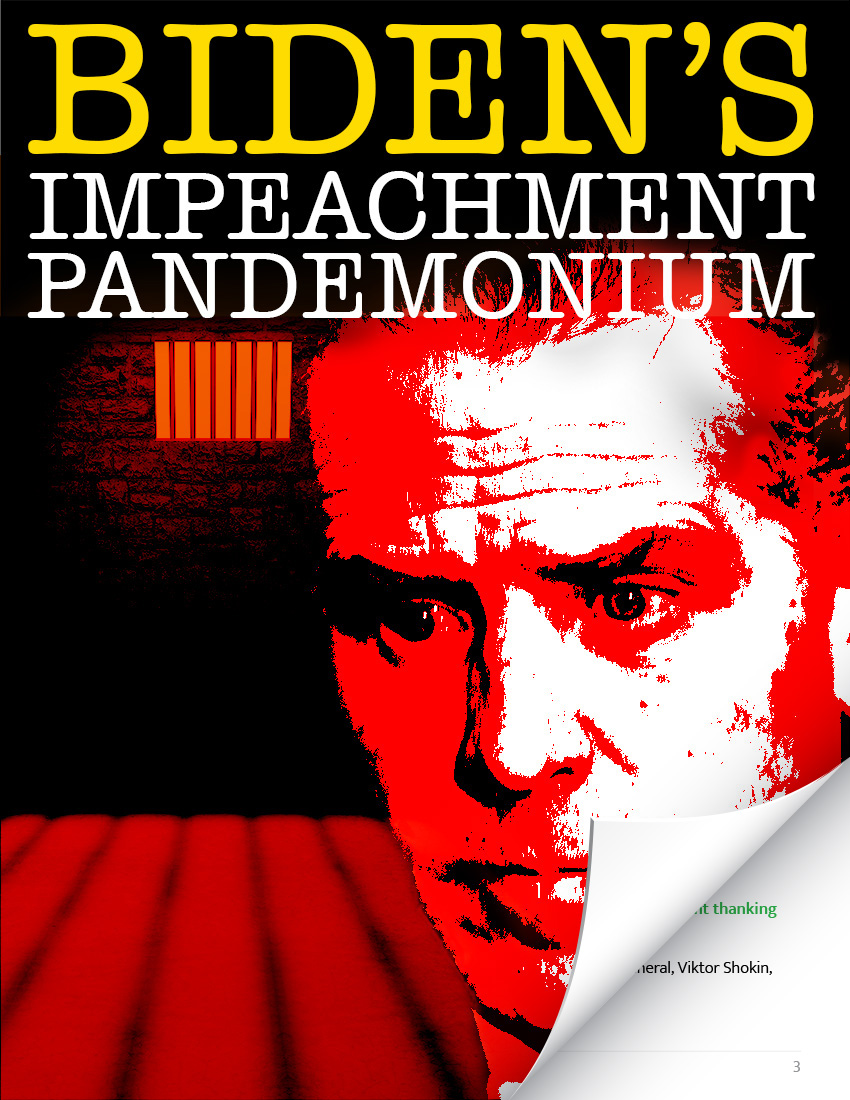
TRUMP SAYS: HUNTER MAKES FORTUNE FROM SHADY DEALS!
BIDEN FAMILY STINKS TO HIGH HEAVENS OF CORRUPTION!
DON'T GET LEFT OUT: HUNTER MUST BE STOPPED!
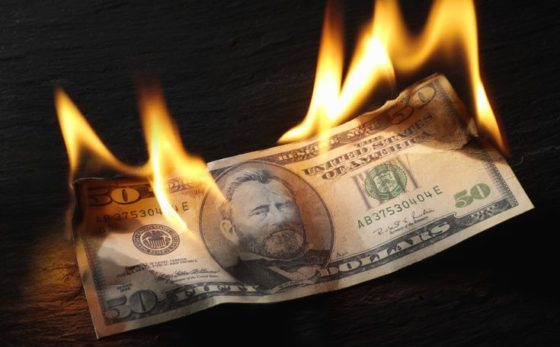
This article was originally published by Tyler Durden at ZeroHedge.

Almost eight years ago, we first presented a chart first created by JPMorgan’s Michael Cembalest, which showed very simply and vividly that reserve currencies don’t last forever, and that in the not too distant future, the US Dollar would also lose its status as the world’s most important currency, since it is never different this time.
As Cembalest put it back in January 2012, “I am reminded of the following remark from late MIT economist Rudiger Dornbusch: ‘Crisis takes a much longer time coming than you think, and then it happens much faster than you would have thought.'”
Perhaps it is not a coincidence then that in light of the growing number of mentions of MMT and various other terminal, destructive monetary policies that have been proposed to kick on the current financial system the can just a little bit longer, that the topic of longevity of reserve currency status is once again becoming all the rage, and none other than JPMorgan’s Private Bank ask in this month’s investment strategy note whether “the dollar’s “exorbitant privilege” is coming to an end?”
So why is JPM, after first creating the iconic chart above which has since spread virally across all financial corners of the internet, not only worried that the dollar’s reserve status may be coming to an end, but in fact goes so far as to state that “we believe the dollar could lose its status as the world’s dominant currency (which could see it depreciate over the medium term) due to structural reasons as well as cyclical impediments.”
Is the dollar’s “exorbitant privilege” coming to an end?
In Brief:
The U.S. dollar (USD) has been the world’s dominant reserve currency for almost a century. As such, many investors today, even outside the United States, have built and become comfortable with sizable USD overweights in their portfolios. However, we believe the dollar could lose its status as the world’s dominant currency (which could see it depreciate over the medium term) due to structural reasons as well as cyclical impediments.
As such, diversifying dollar exposure by placing a higher weighting on other currencies in developed markets and in Asia, as well as precious metals makes sense today. This diversification can be achieved with a strategy that maintains the underlying assets in an investment portfolio but changes the mix of currencies within that portfolio. This is a completely bespoke approach that can be customized to meet the unique needs of individual clients.
The rise of the U.S. dollar
It is commonly perceived that the U.S. dollar overtook the Great British Pound (GBP) as the world’s international reserve currency with the signing of the Bretton Woods Agreements after World War II. The reality is that sterling’s value was eroded for many decades prior to Bretton Woods. The dollar’s rise to international prominence was fueled by the establishment of the Federal Reserve System a little over a century ago and U.S. economic emergence after World War I. The Federal Reserve System aided in the establishment of more mature capital markets and a nationally coordinated monetary policy, two important pillars of reserve-currency countries. Being the world’s unit of account has given the United States what former French Finance Minister Valery d’Estaing called an “exorbitant privilege” by being able to purchase imports and issue debt in its own currency and run persistent deficits seemingly without consequence.
The shifting center
There is nothing to suggest that the dollar dominance should remain in perpetuity. In fact, the dominant international currency has changed many times throughout history going back thousands of years as the world’s economic center has shifted.
After the end of World War II, the U.S. accounted for the biggest share of world GDP at more than 25%. This number is brought to more than 40% when we include Western European powers. Since then, the main driver of economic growth has shifted eastwards towards Asia at the expense of the U.S. and the West. China is at the epicenter of this recent economic shift driven by the country’s strong growth and commitment to domestic reforms. Over the last 70 years, China has quadrupled its share of global GDP to around 20%—roughly the same share as the U.S.—and this share is expected to continue to grow in the years ahead. China is no longer just a manufacturer of low-cost goods as a growing share of corporate earnings is coming from “high value add” sectors like technology.
China regaining its status as a global superpower
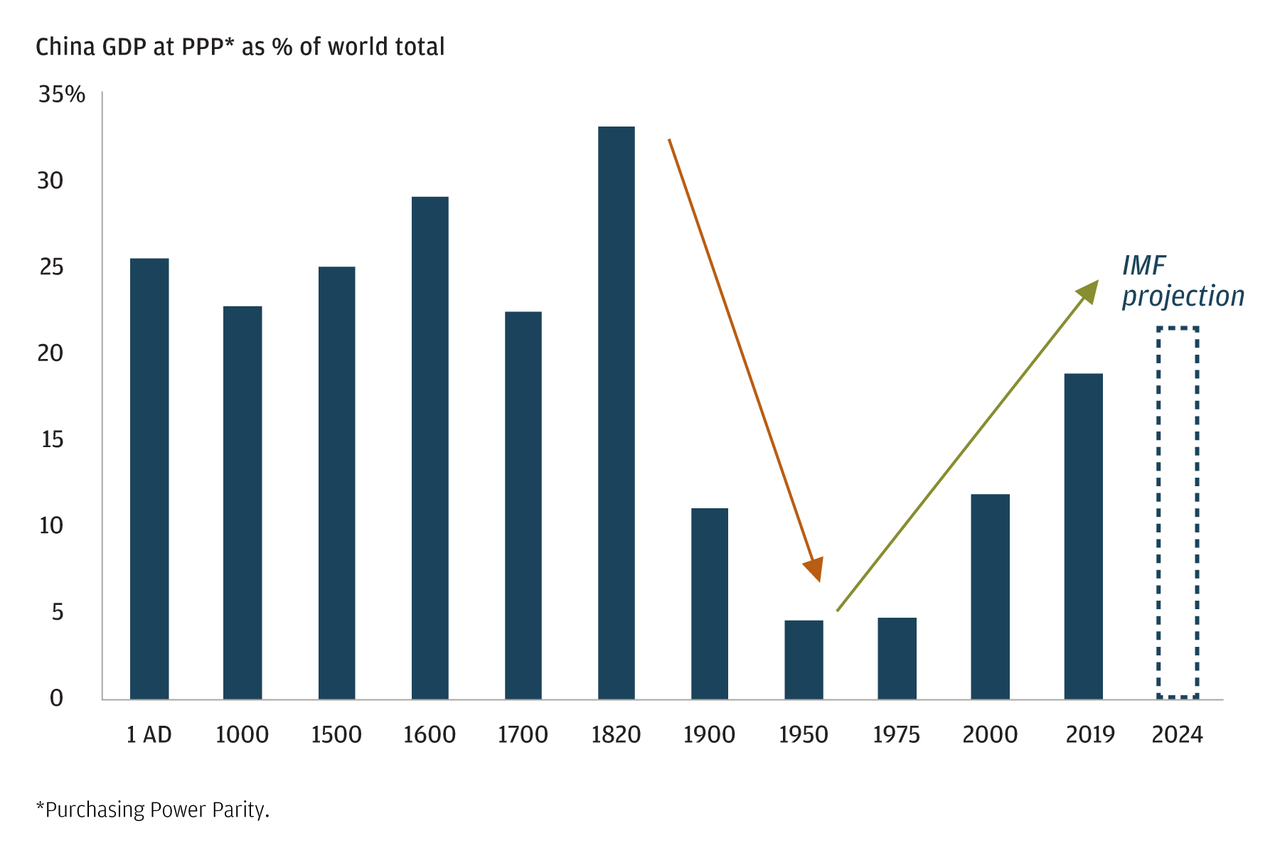
Earnings in China are becoming more balanced
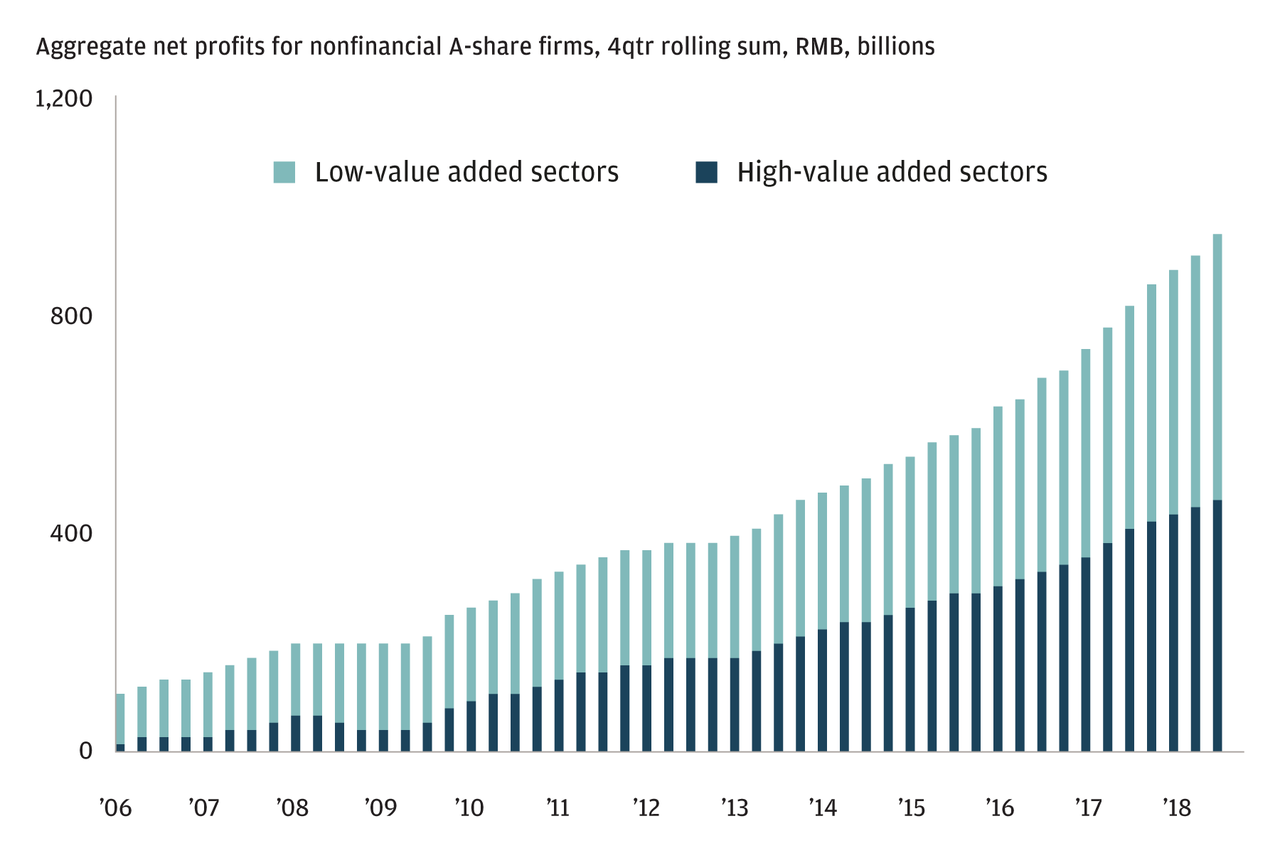
In addition to China, the economies of Southeast Asia, including India, have strong secular tailwinds driven by younger demographics and proliferating technological know-how. Specifically, the Asian economic zone—from the Arabian Peninsula and Turkey in the West to Japan and New Zealand in the East and from Russia in the North and Australia in the South—now represents 50% of global GDP and two-thirds of global economic growth. Of the estimated $30 trillion in middle-class consumption growth between 2015 and 2030, only $1 trillion is expected to come from today’s Western economies. As this region grows, the share of non-USD transactions will inevitably increase which will likely erode the dollar’s “reserveness”, even if the dollar isn’t replaced as the dominant international currency.
In other words, in the coming decades, we think the world economy will transition from U.S. and USD dominance toward a system where Asia wields greater power. In currency space, this means the USD will likely lose value compared to a basket of other currencies, including precious commodities like gold.
Dollar’s declining role already underway?
Recent data on currency reserve holdings among global central banks suggests this shift may already be underway. As a share of overall central bank reserves, the USD’s role has been declining ever since the Great Recession (see chart). The most recent central bank reserve flow data also suggests that for the first time since the euro’s introduction in 1999, central banks simultaneously sold dollars and bought euros.
Central banks across the globe are also adding to gold reserves at their strongest pace on record. 2018 saw the strongest demand for gold from central banks since 1971 and a rolling four-quarter sum of gold purchases is the strongest on record. To us, this makes sense: gold is a stable source of value with thousands of years of trust among humans supporting it.
USD share of central bank reserves, %
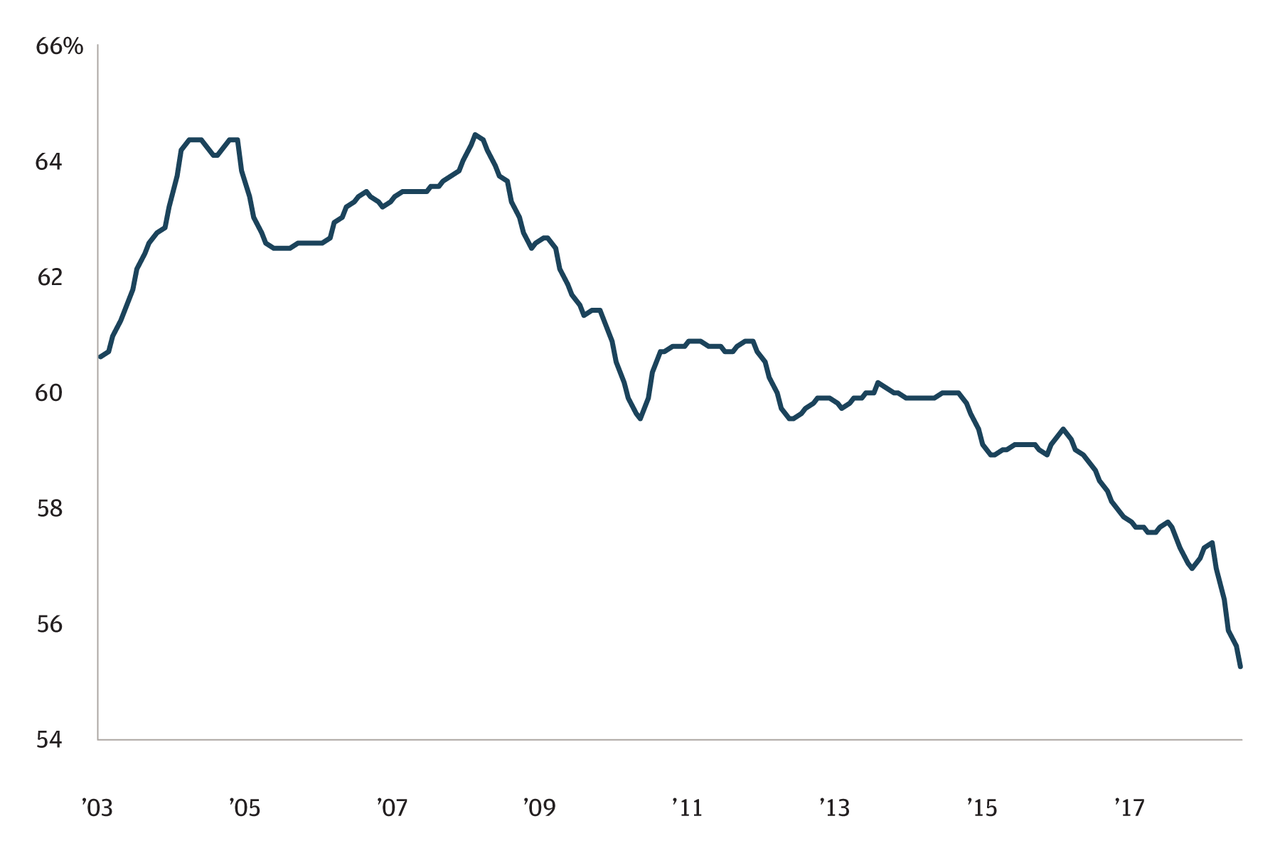
Source: Exante. Data as of September 30, 2018. The series is FX-adjusted.
The current U.S. administration has called into question agreements with nearly all of its largest partners—tariffs on China, Mexico, and the European Union, renegotiating NAFTA, as well as abandoning the Trans-Pacific Partnership. A more adversarial U.S. administration could also encourage countries to reduce their reliance on USD in trade. Currently, 85% of all currency transactions involve the USD despite the U.S. accounting for only roughly 25% of global GDP.
Countries around the world are already developing payment mechanisms that would avoid using the dollar. These systems are small and still developing but this is likely to be a structural story that will extend beyond one particular administration. In a recent speech on the international role of the euro, Bank for International Settlements Chief Economist Claudio Borio brought up the benefits of pricing oil in the euro saying, “Trading and settling oil in the euro would move payments from dollars to euros and thereby shift ultimate settlement to the euro’s TARGET2 system. This could limit the reach of U.S. foreign policy insofar as it leverages dollar payments.” The European Central Bank also alluded to this theme in a recent report saying that “growing concerns about the impact of international trade tensions and challenges to multilateralism, including the imposition of unilateral sanctions seem to have lent support to the euro’s global standing.”
We believe we are at an important juncture. On a real basis, the dollar stands currently more than 10% above its long-term average and on a nominal basis has actually been trending lower for 50 years (see chart below).
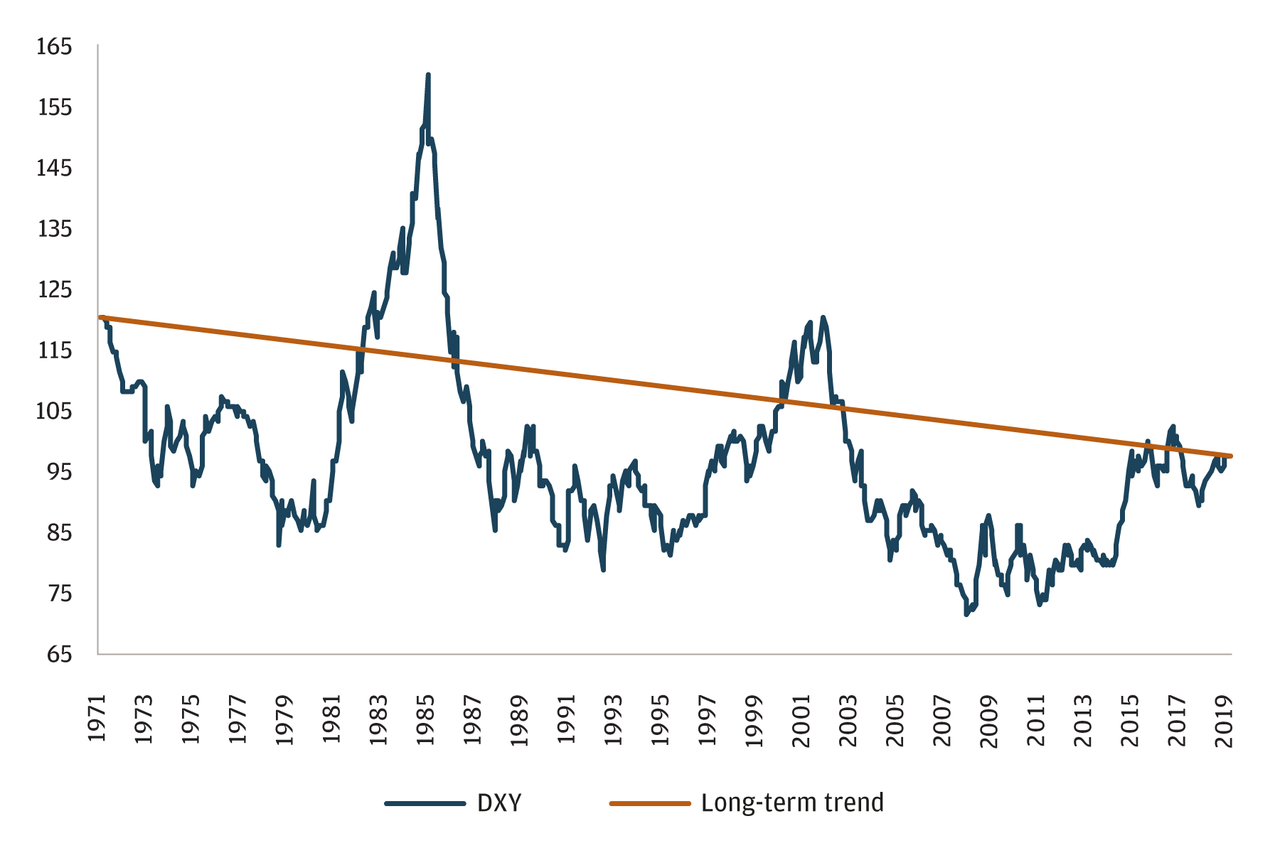
Source: Bloomberg as of June 13, 2019
Given the persistent—and rising—deficits in the United States (in both fiscal and trade), we believe the U.S. dollar could become vulnerable to a loss of value relative to a more diversified basket of currencies, including gold. As we scan client portfolios, we see that many of them have far more U.S. dollar exposure than we feel is prudent. At this stage of the economic cycle, we believe this exposure should be more diversified. In many cases, our recommendation would likely be to place a higher weighting on other G10 currencies, currencies in Asia and gold (see chart).
FX exposure
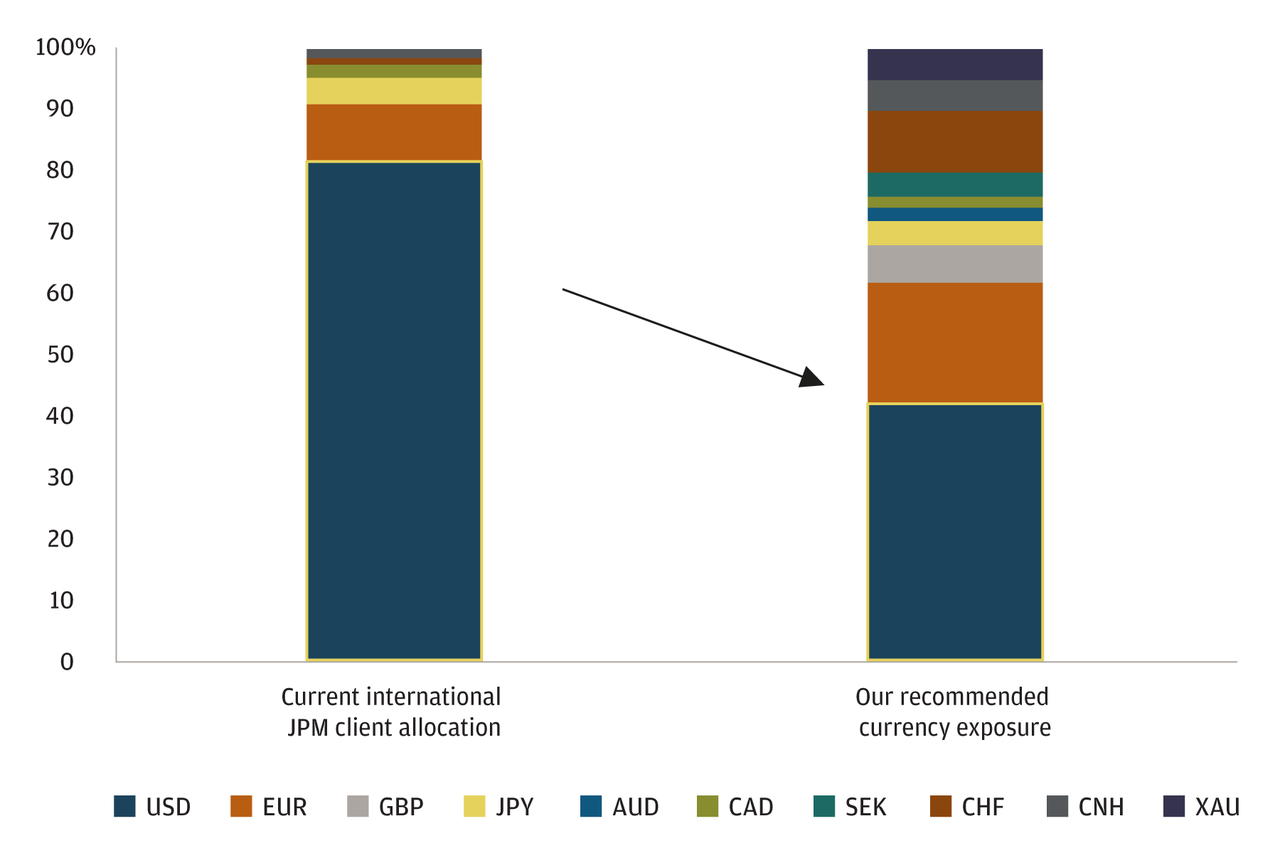
Source: J.P. Morgan Private Bank as of June 13, 2019.

It Took 22 Years to Get to This Point
Iowa's Johnson County Health Department is pushing the flu vaccine, claiming that it will prevent...
Most of us have heard of germ theory ad nauseam since the beginning of the COVID-19 scamdemic....
This article was originally published by Willow Tohi at Natural News. The Biden administration...
Renowned award-winning computer scientist Yoshua Bengio has warned that artificial intelligence...
Commenting Policy:
Some comments on this web site are automatically moderated through our Spam protection systems. Please be patient if your comment isn’t immediately available. We’re not trying to censor you, the system just wants to make sure you’re not a robot posting random spam.
This website thrives because of its community. While we support lively debates and understand that people get excited, frustrated or angry at times, we ask that the conversation remain civil. Racism, to include any religious affiliation, will not be tolerated on this site, including the disparagement of people in the comments section.


Heads up preppers. Illinois is now preparing to ban high cap magazines. You knew they would. The Democrat Marxists control the entire state now.
My Peeps, more than 80% of ALL global commercial transactions occur in the Almighty Dollar. Eventually, if thermonuclear war can be avoided, there will be TWO competing political and financial systems in the world:
Gog and Magog
You will be dead long, long, long before the dollar dies. 🙂
I have said this a thousand times money has no value, it is merely a means of transferring wealth.
Gold, dollar, euro, ruble, yuan peso, are all arbitrarily set by some “market”. Why not use diamonds? We don’t use diamonds because nobody trusts the people that market them.
It is all about trust. If nobody trusts your money, your money has no value to them.
When the world ceases to trust America, the Dollar will cease to be as important as it is now. It is that simple.
Democrats are working hard on destroying the worlds trust of America. They’ve destroyed my trust in the governments and cities of America. They haven’t yet destroyed my trust of the majority of people in America.
And why is SE Asia and China taking over the bulk of the world economy? Because that is exactly how capitalism operates. Capital always seeks the situation where it gets the best returns. When energy is available everywhere at a comparable cost to run the machinery and transport ships, it then becomes the place where the labor is cheapest, and where regulation costs the company the least, that capital investment goes. This is in countries that have people that work for peanuts, in poor conditions, just to eek out a living.
Blame China for the corporations that relocated there, if you want. Blame China for demanding that these corporations turn over technology in exchange for a cheap labor force, if you wish. Blame China for having no environmental regulations. Doesn’t matter. These corporations made a free-will decision to relocate there in order to gain a competitive advantage in the market. They freely gave over their tech in order to make more profit. That’s how capitalism works. The bottom line is all that matters.
Trump can tariff all he wants. The capitalists will just relocate to a more favorable country with low labor costs. How to maybe get some manufacturing back? Tariff most all of the “developing” nations with cheap labor, gut all EPA and OSHA regulations here, and convince people they must work for a couple dollars a day like most of the “emerging markets” do. And no more 5 day work weeks…seven days now. Unless this happens, all the jobs will never return. Corporations don’t do business to keep the people happy, they do business to make as much profit as they can. I’m sure there is no argument from posters here because we all love capitalism. It made America a world power. Well, along with once being the world’s crude oil supplier back in the early 20th century. But, if you can’t compete with shithole countries, you will lose your jobs.
The only reason that we still have fairly good living conditions here is because of the reserve FRN. So I don’t wish for it to collapse anytime soon.
I **DO** wish it would happen ASAP. You are right – fairly good living conditions here. Problem is…. too many have not earned that.
A reset will get rid of those people.
JRS,
You get some things right, sometimes.
But question( sic) me this,
What do you do when you automate so much you don’t need workers, but you need workers to consume your products?
Nobody is asking those questions.
Very few occupations cannot be automated. The limit is our present technology and subjective beliefs.
This will be overcome, someday.
The real question is what do we do with all our idiots?
Yes, you’re right. I was going to say something about automation, but the comment was already too long. I don’t know what will happen, but what may happen if everything becomes automated is they will start something like UBI. The debt must grow and the spice must flow or it all collapses.
rellik
As the story goes legendary USW Labor leader Walter Reuther got a tour in 1970 of Fords first facility with robotics. Henry Ford IV (or III) said, “Walt, those robots won’t go out on strike”. Reuther replied, “They won’t buy any cars either”.
The question that goes begging is, “what happens when labor is largely rendered obsolete”?
This conversation has occurred for well over a decade in the alternate media followed by “tin foil hat”, “conspiracy theorist” or just plain old “kook”. Now low and behold here we have a cornerstone of the banking system, JP Morgan, saying the same. Interestingly most don’t and won’t understand the significance and importance of the USD and the effects of its demise. Few question how a nation that makes so little (relevant) can live so large. Bretton Woods, USD Reserve Currency and Oil Peg are three things I bring up when deciding if someone new is worthy of a discussion above “how is the weather”.
When currency is not redeemable in gold, its value depends entirely on the judgement and the conscience of the politicians. In other words … considering that there is no current government on earth that is not corrupt or corrupted, the only method of measuring and transferring true wealth is by possessing physical precious metals.
This is just another facet in the on going asymmetrical war on America. Economic warfare.
“Crisis takes a much longer time coming than you think, then it happens faster than you would have thought.”
That says so much about so many things.
I was sitting next to a young woman. She was dressed in white. She looked like she just stepped out of the shower, fixed her hair, put on washed and pressed clothing, applied her makeup flawlessly, dabbed on perfume and left for the day.
The problem was, she was as fat as a house. She was decorating while the house was burning. Inside this perfectly presentable young lady, I could hear the cries, “diabetes, diabetes”.
.